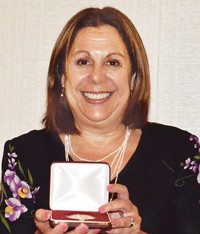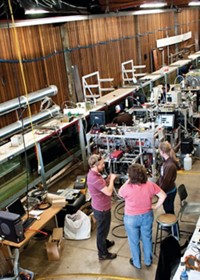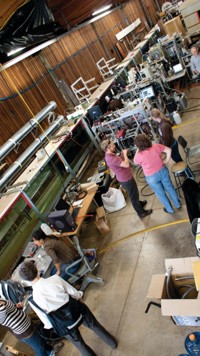Advertisement
Grab your lab coat. Let's get started
Welcome!
Welcome!
Create an account below to get 6 C&EN articles per month, receive newsletters and more - all free.
It seems this is your first time logging in online. Please enter the following information to continue.
As an ACS member you automatically get access to this site. All we need is few more details to create your reading experience.
Not you? Sign in with a different account.
Not you? Sign in with a different account.
ERROR 1
ERROR 1
ERROR 2
ERROR 2
ERROR 2
ERROR 2
ERROR 2
Password and Confirm password must match.
If you have an ACS member number, please enter it here so we can link this account to your membership. (optional)
ERROR 2
ACS values your privacy. By submitting your information, you are gaining access to C&EN and subscribing to our weekly newsletter. We use the information you provide to make your reading experience better, and we will never sell your data to third party members.
Environment
ACS Award for Creative Advances in Environmental Science & Technology
by Lila Guterman
January 30, 2012
| A version of this story appeared in
Volume 90, Issue 5

Sponsored by the ACS Division of Environmental Chemistry
When trying to understand chemistry in the atmosphere, modelers can oversimplify, and field researchers can find the real world’s complexity overwhelming. To their aid comes Vicki H. Grassian, a University of Iowa chemistry professor and Collegiate Fellow, who uses laboratory techniques to understand particles and their impact on climate, the environment, and health.
“Professor Grassian is a pioneer for her original and creative contributions in understanding the physicochemical properties of mineral dust aerosol through fundamental laboratory studies,” says Kimberly A. Prather, professor of atmospheric chemistry at the University of California, San Diego. “These fundamental laboratory studies have directed us toward better understanding the atmospheric chemistry and climatic implications of mineral dust aerosol, an important component of the Earth’s atmosphere.”
Grassian, 52, came to study environmental questions after training and working as a surface chemist. A colleague at Iowa, Gregory R. Carmichael, associate dean for research and graduate studies in the College of Engineering and a professor of chemical engineering, gave a seminar in the mid-1990s about surface reactions on mineral dust aerosol in the atmosphere. “I remember thinking ‘that’s a really messy system,’ ” Grassian says, because of the complexity of mineral dust—a varying mix of oxides, carbonates, and clays. But modelers like Carmichael had to assume in the analysis that for some reactions dust behaved like ice or sulfate particles, because kinetic data were available only for those types of particles.
“From a chemistry perspective, that just didn’t sit well with me,” she recalls.
So in her laboratory, she started studying reactions of trace gases in the atmosphere, such as ozone and nitrogen dioxide, with mineral dust surfaces. She discovered that certain components of the particles were more reactive toward certain gases: For instance, iron oxide is one of the more reactive components with ozone, whereas calcium carbonate is very reactive with nitrogen oxides.
Grassian has “established herself as the leading laboratory chemist working on environmental reactions on oxide and carbonate surfaces,” Carmichael says. “Her work has been creative, comprehensive, and transformative.”
Her studies have revealed the importance to reactivity of dust particle makeup and of adsorbed water, and thus the importance of relative humidity on both the kinetics of these reactions and the physicochemical properties of the reacted particles. For example, Grassian says, a solid particle of CaCO3 can react extensively with nitrogen oxides to form Ca(NO3)2, which, being more hygroscopic, will pick up water and become a liquid droplet. “That’s a very different particle as it’s being transported in the atmosphere,” she says. “We’re trying to understand how these dust particles change and how these changes alter their global impact.”
She has also made important contributions to heterogeneous photochemistry, demonstrating that daytime chemistry on aerosol particles can yield nitrous oxide, a potent greenhouse gas. And her group has turned its attention to the impact of nanoparticles in the environment and on human health.
Carmichael comments that Grassian’s results are “widely used in atmospheric chemistry and climate models.” And with her research on heterogeneous reactions on realistic environmental surfaces, Grassian has “explained more results from field studies on dust than has any other investigator in the world,” Prather adds.
Grassian will present the award address before the ACS Division of Environmental Chemistry.





Join the conversation
Contact the reporter
Submit a Letter to the Editor for publication
Engage with us on Twitter